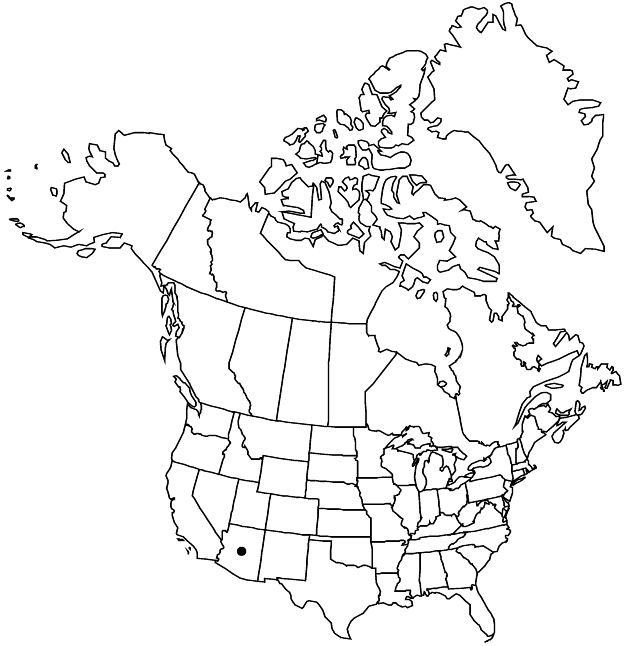Rosa stellata subsp. abyssa
Madroño 39: 31, fig. 1. 1992.
Stems erect or arching, 2.5–10(–15) dm; distal branches tomentose-woolly, with stellate hairs, stipitate-glandular; infrastipular prickles paired, stout, 10–12 × 3.5–6 mm, internodal prickles and aciculi sparse, smaller, eglandular, rarely glandular. Leaves: stipules 4–8 × 1–2 mm, margins entire, often sessile- or stipitate-glandular, glands sparse to common, auricles foliaceous; petiole and rachis puberulent, sometimes glabrous; leaflets 3, terminal: petiolule 1 mm, blade obovate, margins broadly 1-crenate, teeth 4–8 per side, abaxial surfaces tomentulose or glabrous, adaxial lustrous. Flowers 5 cm diam.; hypanthium: densely setose, setae 4–6 mm; sepals 12–20 × 1–3(–4) mm; petals dark pink. Hips subglobose, 10–18 mm diam., densely setose.
Phenology: Flowering May–Jun.
Habitat: Canyon rims and drainages, tops of cliffs, edges of mesas or plateaus, sandy to gravelly soil with limestone chips
Elevation: 1400–2300 m
Discussion
Subspecies abyssa is known only from Coconino and Mohave counties approximately 750 km from the nearest populations of subsp. stellata in New Mexico (A. M. Phillips 1992).
Selected References
None.
